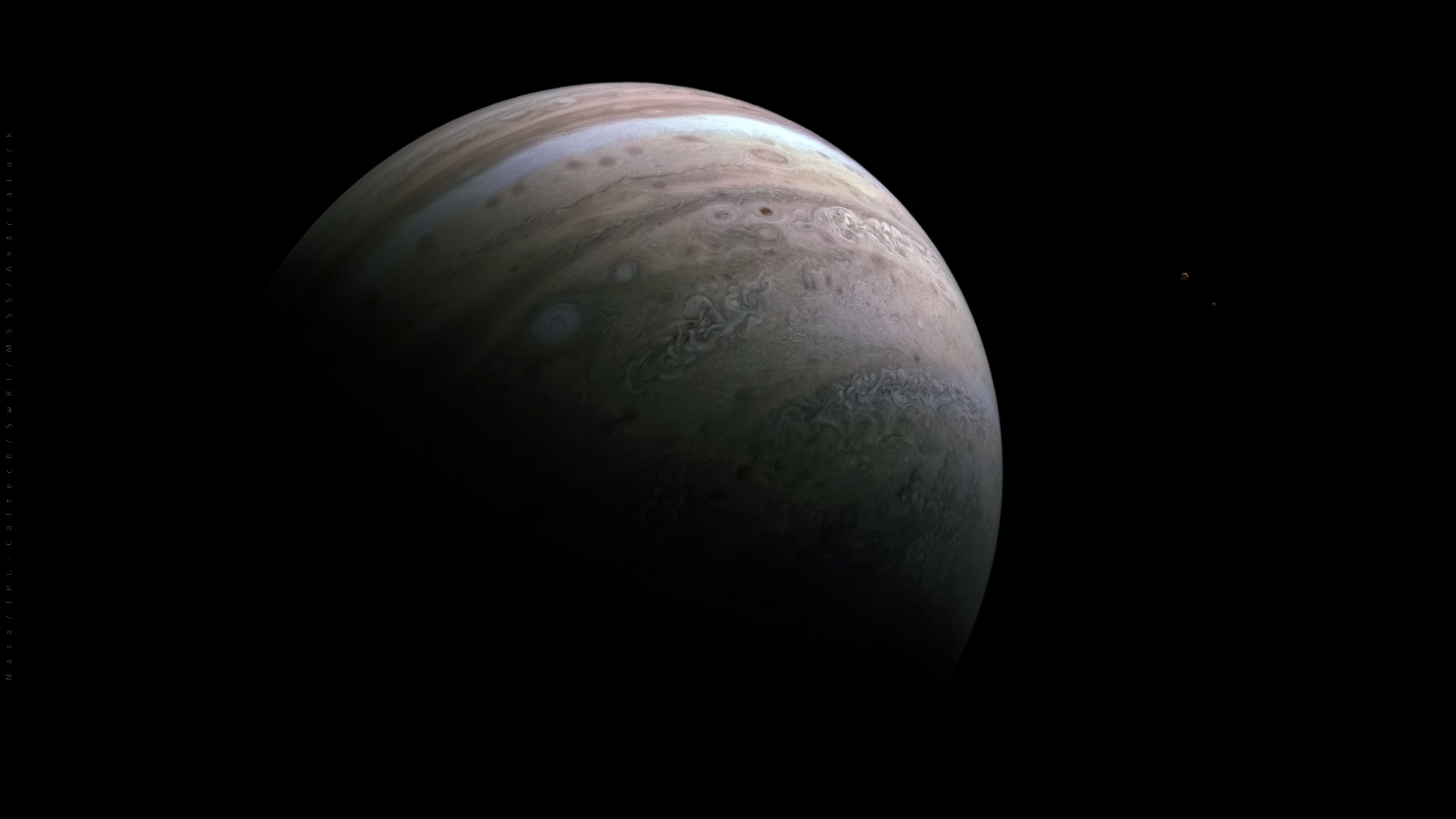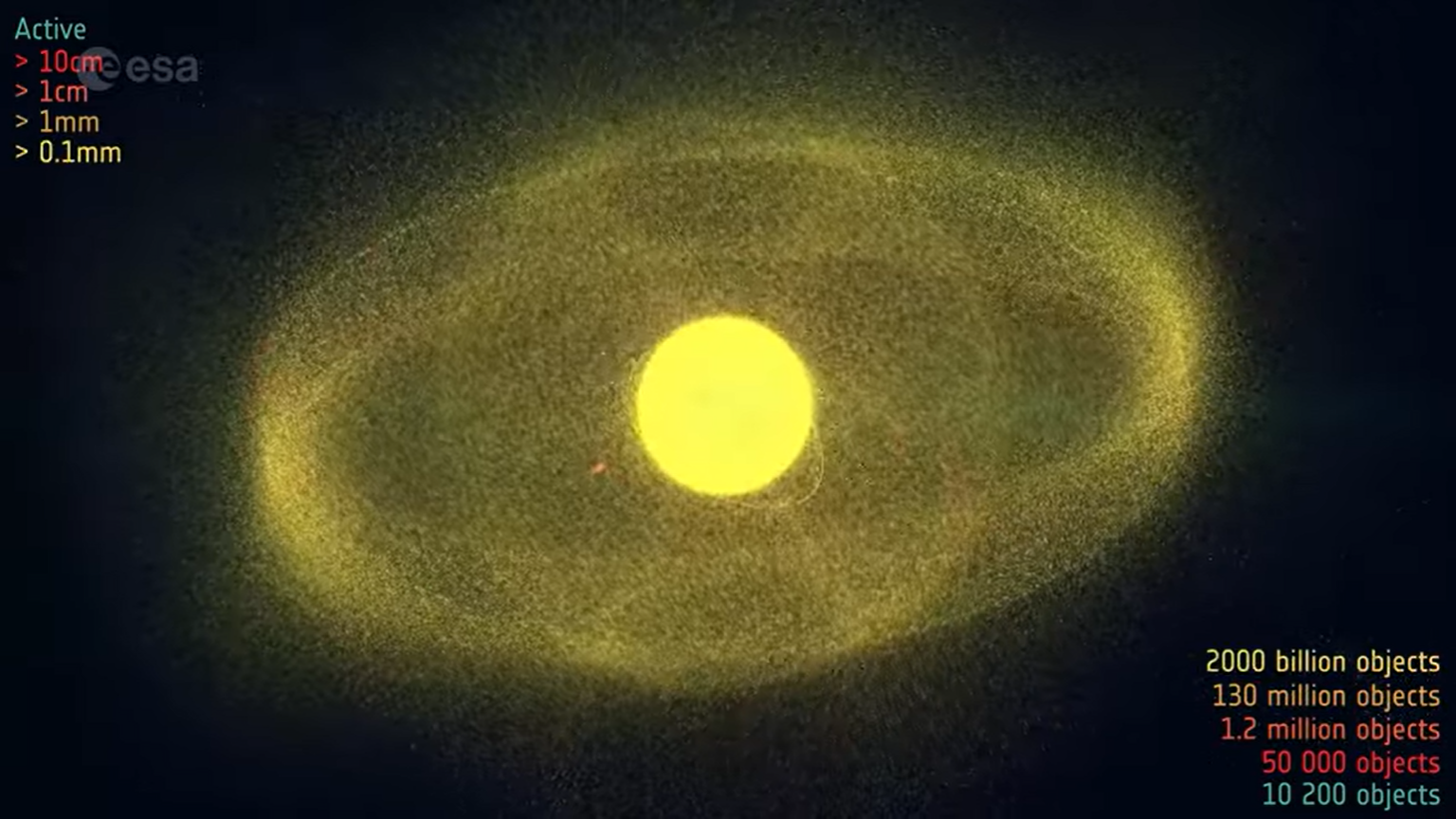NASA spacecraft snaps gorgeous new photo of Jupiter's moons Io and Europa
NASA's Juno spacecraft flew close to Jupiter on Jan. 12, capturing a stunning new view of the planet and two of its moons, lo and Europa.

NASA's Juno spacecraft beamed back stunning new photos of Jupiter's moons, Io and Europa.
Juno's latest view of the two moons was captured during the spacecraft's 39th close flyby of Jupiter on Jan. 12. At the time, the spacecraft was about 38,000 miles (61,000 kilometers) above Jupiter's cloud tops, at a latitude of about 52 degrees south.
The new photo, which NASA shared on March 16, offers a stunning view of Jupiter's southern hemisphere, with two of its many moons to the right of the frame. A zoomed in view that the agency also shared brings the moons into clear view, with Io on the left and Europa on the right.
In Photos: Juno's amazing views of Jupiter
Jupiter's moon Io is the most volcanic body in the solar system. Hundreds of volcanoes dot its surface, some of them spewing sulfurous plumes hundreds of miles high.
Conversely, Europa, the smallest of Jupiter's four giant Galilean moons, has an icy surface, beneath which lies a global ocean of liquid water, scientists believe. Previous observations have found evidence of possible water plumes jetting from the Europa's south polar region, suggesting that there is water in the moon's subsurface ocean breaking out through cracks in the icy crust.
The Juno spacecraft is expected to make its closest fly-by of Europa later this year, in September. During this fly-by, the probe will use several of its scientific instruments to study Europa in greater detail and capture even more stunning views of the mysterious moon.
Breaking space news, the latest updates on rocket launches, skywatching events and more!

The Juno mission will also make close approaches to lo in late 2023 and early 2024, according to the NASA statement. The mission is currently expected to end in September 2025.
Two key spacecraft will soon follow in Juno's wake designed to focus exclusively on understanding the giant's moons: NASA's Europa Clipper mission and the European Space Agency's Jupiter Icy Moons Explorer (JUICE).
The new Jupiter photo was processed by citizen scientist Andrea Luck, using raw data from the JunoCam instrument. JunoCam's raw images are available online to the public; members of the community can also suggest features on Jupiter for the camera to photograph.
Follow Samantha Mathewson @Sam_Ashley13. Follow us on Twitter @Spacedotcom and on Facebook.

Samantha Mathewson joined Space.com as an intern in the summer of 2016. She received a B.A. in Journalism and Environmental Science at the University of New Haven, in Connecticut. Previously, her work has been published in Nature World News. When not writing or reading about science, Samantha enjoys traveling to new places and taking photos! You can follow her on Twitter @Sam_Ashley13.
